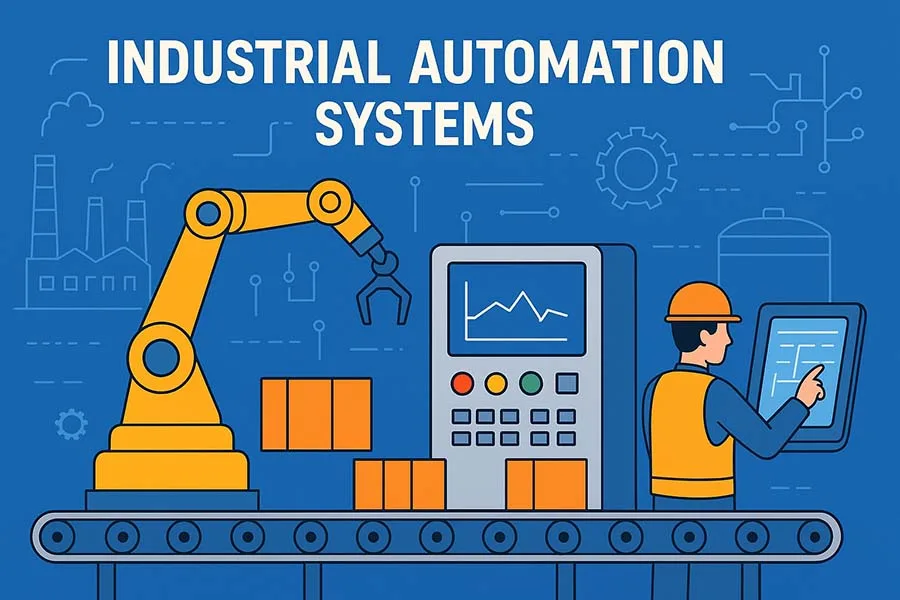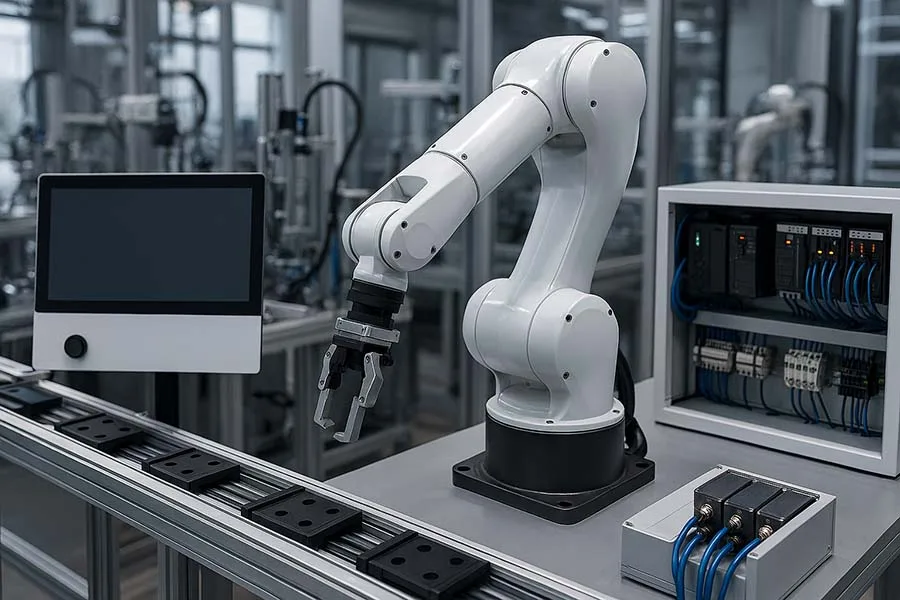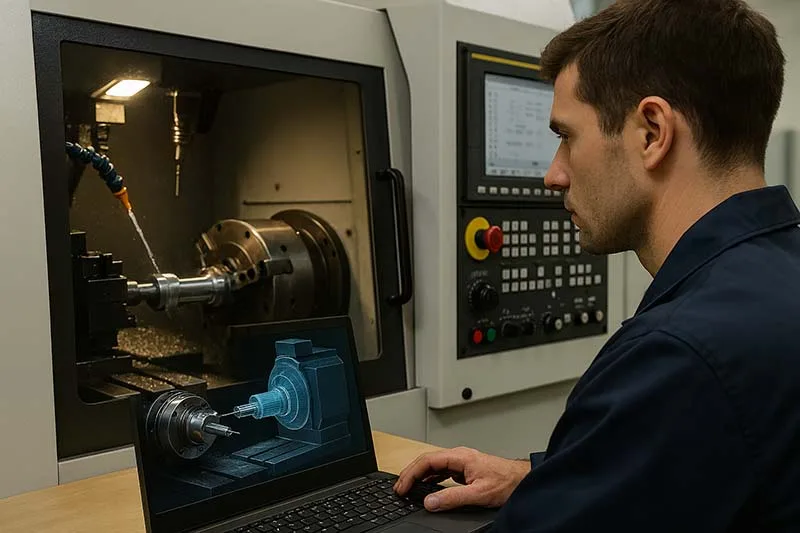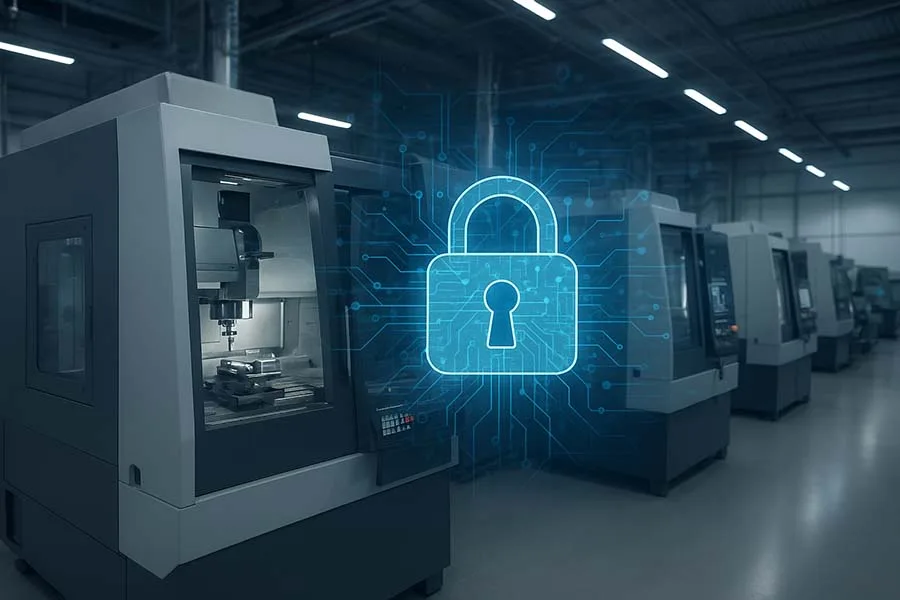Introduction: Why Industrial Automation Matters Today
Industrial automation systems are no longer the future—they’re the present. From car manufacturing to food processing, these systems are transforming industries, increasing efficiency, reducing errors, and ensuring safer workplaces. But what exactly are industrial automation systems, and why are they so essential? In this guide, we’ll break it down, covering types, components, benefits, and real-world applications, plus a few surprising facts along the way.
Fun Fact: The first industrial robot, Unimate, was installed in a General Motors factory in 1961. Today, some factories have hundreds of robots working 24/7.
1. What Are Industrial Automation Systems?
At their core, industrial automation systems are setups that control machinery and processes without—or with minimal—human intervention. They integrate hardware, software, and control systems to manage production, improve quality, and reduce operational costs.
Key Components:
- Sensors: Detect changes in temperature, pressure, or position.
- Actuators: Convert electrical signals into physical movement.
- Controllers: PLCs (Programmable Logic Controllers) or DCS (Distributed Control Systems) manage processes.
- Human-Machine Interfaces (HMI): Allow operators to monitor and adjust systems.
- Communication Networks: Enable machines and systems to talk to each other in real-time.
Lesser-Known Fact: Some automation systems can detect faults and correct them before a human operator even notices an issue.
2. Types of Industrial Automation Systems
Automation can be categorized in several ways, depending on complexity, application, and control methods:
- Fixed (Hard) Automation
- Best for high-volume production.
- Examples: Automotive assembly lines, bottling plants.
- Pros: High speed, low labor costs.
- Cons: Inflexible to product changes.
- Programmable Automation
- Used for batch production where product designs change periodically.
- Pros: Flexible, reprogrammable.
- Examples: CNC machines, plastic molding.
- Flexible (Soft) Automation
- Highly adaptable systems that can switch between products seamlessly.
- Pros: Maximum flexibility, minimal downtime.
- Examples: Semiconductor manufacturing, electronics assembly.
- Robotics & Collaborative Robots (Cobots)
- Robots working alongside humans, handling repetitive, dangerous, or precise tasks.
- Pros: Enhances safety, reduces human fatigue.
3. Benefits of Industrial Automation Systems
Automation offers more than just faster production. Key benefits include:
- Increased Productivity: Machines can run 24/7 without breaks.
- Consistency & Quality: Automation reduces human error, ensuring uniform products.
- Safety: Dangerous tasks are handled by machines, lowering workplace accidents.
- Cost Savings: Lower labor costs and fewer mistakes translate to significant savings.
- Data & Insights: Modern systems collect real-time data for process optimization.
Fun Fact: A single automated machine can often replace up to 10 manual operators—but it doesn’t complain about overtime.
4. Applications Across Industries
Automation touches almost every sector:
- Automotive: Robotic arms for welding, painting, and assembly.
- Food & Beverage: Automated filling, packaging, and labeling.
- Pharmaceuticals: Precise mixing, filling, and quality testing.
- Electronics: PCB assembly, component testing, and soldering.
- Logistics & Warehousing: Automated storage and retrieval systems, AGVs (Automated Guided Vehicles).
5. Choosing the Right Automation System
When selecting an industrial automation system, consider:
- Production Volume: High-volume vs. batch production.
- Flexibility Needs: Fixed vs. flexible automation.
- Integration: Compatibility with existing machinery.
- Maintenance & Support: Availability of technical support and spare parts.
- Budget & ROI: Initial investment vs. long-term savings.
Further Read
- Industrial Automation Solutions – Industrial Tools
- Industrial Automation Systems: The Backbone of Modern Industry – Industrial Tools
- Process Automation in Manufacturing: The Key to Smarter Production – Industrial Tools
- Automation Companies to Watch in 2025 and Beyond – Industrial Tools
- Automation Machines for Industry: Types, Benefits, and Future Trends
- Automated Material Handling Solutions: Benefits, Types & Future Trends
- Automated Control Systems – Industrial Tools
- Industrial Automation Solutions: Transforming Modern Manufacturing
- Warehouse Automation Tools: Boosting Efficiency in Modern Warehouses – Industrial Tools
- Intelligent Automation Technologies: The Future of Industry – Industrial Tools
- Automated Packaging Systems – Industrial Tools
- Automation Case Studies – Industrial Tools
- Automation Trends 2025: What’s Next for Industrial Innovation – Industrial Tools
Conclusion
Industrial automation systems are revolutionizing industries by enhancing efficiency, safety, and product quality. Choosing the right system depends on production needs, flexibility, and long-term goals. Whether you’re upgrading an assembly line or exploring smart factories, understanding the types, benefits, and applications of automation is the first step toward a more productive future.
Call to Action: Have you implemented automation in your facility? Share your experience or questions in the comments—we’d love to hear about your journey toward smarter, safer industry!





